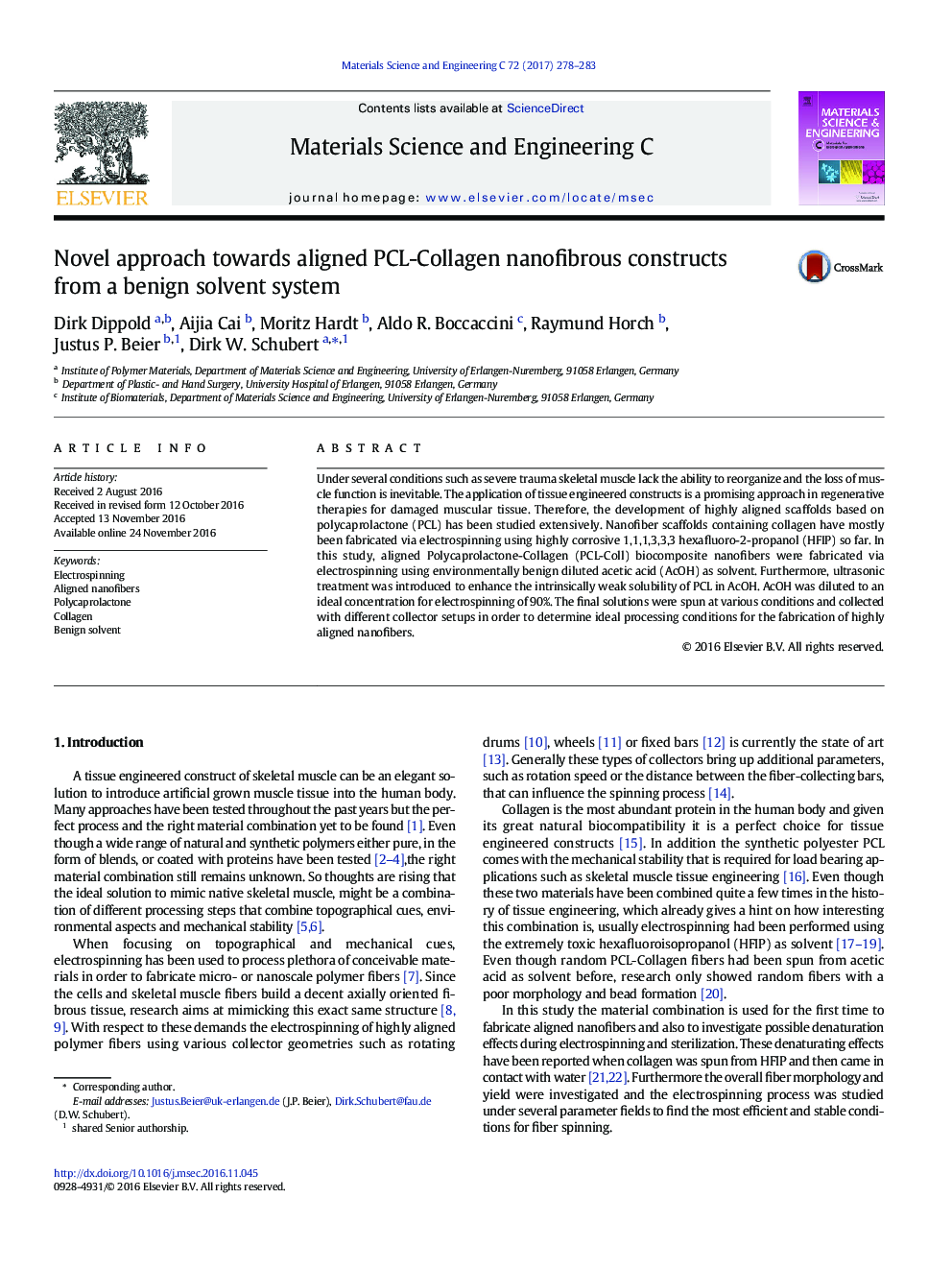| Article ID | Journal | Published Year | Pages | File Type |
|---|---|---|---|---|
| 5435204 | Materials Science and Engineering: C | 2017 | 6 Pages |
â¢Novel PCL-Collagen nanofibers using acetic acid and water as solventâ¢Investigation of process parameters and changing process stabilityâ¢Improving efficiency, stability and structure of aligned nanofibers
Under several conditions such as severe trauma skeletal muscle lack the ability to reorganize and the loss of muscle function is inevitable. The application of tissue engineered constructs is a promising approach in regenerative therapies for damaged muscular tissue. Therefore, the development of highly aligned scaffolds based on polycaprolactone (PCL) has been studied extensively. Nanofiber scaffolds containing collagen have mostly been fabricated via electrospinning using highly corrosive 1,1,1,3,3,3 hexafluoro-2-propanol (HFIP) so far. In this study, aligned Polycaprolactone-Collagen (PCL-Coll) biocomposite nanofibers were fabricated via electrospinning using environmentally benign diluted acetic acid (AcOH) as solvent. Furthermore, ultrasonic treatment was introduced to enhance the intrinsically weak solubility of PCL in AcOH. AcOH was diluted to an ideal concentration for electrospinning of 90%. The final solutions were spun at various conditions and collected with different collector setups in order to determine ideal processing conditions for the fabrication of highly aligned nanofibers.
